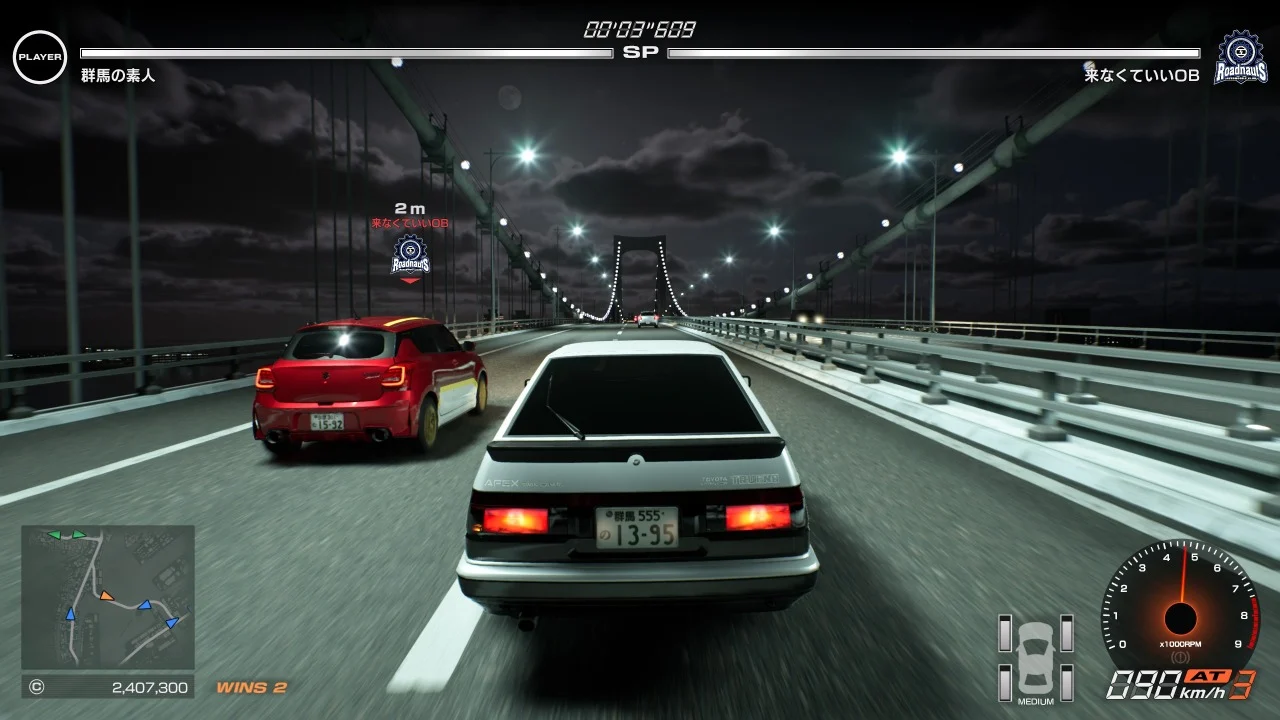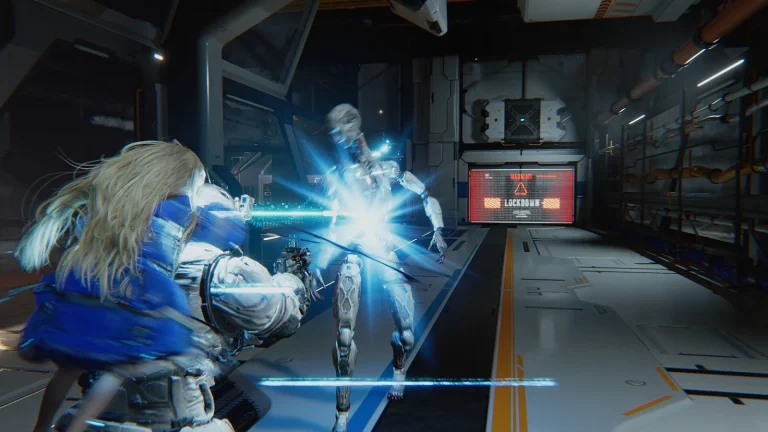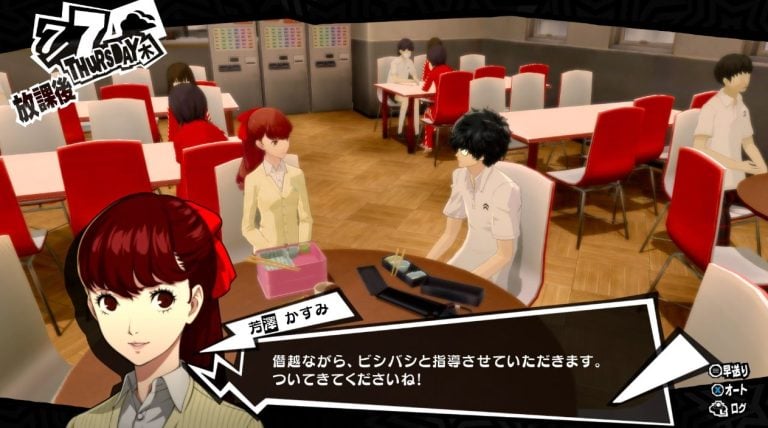Genki released Tokyo Xtreme Racer in Early Access on January 23, marking the long-running racing series’ first full-fledged comeback in 18 years. The game is available on Steam, with the Early Access version priced at $29.99.
Bringing back familiar features like the SP Battle system, the brand-new Tokyo Xtreme Racer lets players race along the meticulously recreated Tokyo Expressway in a good old, single-player fashion. At the time of writing, Tokyo Xtreme Racer has an Overwhelmingly Positive status on Steam, with 95% of 8,470 player reviews being positive.
To find out what led to the franchise’s revival after all these years, AUTOMATON interviewed Kentaro Noguchi, the producer of Tokyo Xtreme Racer at Genki.
Japanese cars are hot right now, which told me it was the right time for a new game
―Please introduce yourself.
Kentaro Noguchi (hereafter Noguchi):
I’m Kentaro Noguchi, the producer of Tokyo Xtreme Racer. I initially joined Genki as a designer, and I’ve been involved in multiple titles in the Tokyo Xtreme Racer and Tokyo Xtreme Racer: Drift series throughout the years. I was also involved in the development of games like BRAHMA Force: The Assault on Beltlogger 9 and Kileak: The Blood (known as Kileak: The DNA Imperative in North America).
―Tokyo Xtreme Racer, which just recently started its Early Access on Steam, is the series’ first comeback in 18 years, but why did you decide to reboot the franchise after all this time?
Noguchi:
On a personal level, I’ve wanted to make a new entry this whole time. I’ve been involved in the TXR series since its Dreamcast era, and went on to work on the Drift series after that. They were both so fun and so important to me. Even though I did debugging for Tokyo Xtreme Racer, I still played the copy I got from the company after the game was released.
In fact, it was the only sample product I got from the company that I actually played at home. I had so much fun both working on and playing Tokyo Xtreme Racer that I knew I wanted to go back to it one day. However, precisely because of how important it was to me, I also felt the pressure – If I was going to make it, I had to make it right. In the meantime, I became busy with other work too, and the time just passed.
However, this entire time, I’ve kept track of fans’ posts on X hoping for a revival of the series, and this also contributed to my desire to make something new. Another factor was that recently, Japanese cars are fetching ridiculous prices in the North American market. For example, GT-R prices are in the tens of millions. In the automobile industry, Toyota has started to focus on sports cars, and Mazda and Honda are following suit, while Nissan continues to evolve the GT-R and Z-series. I got the feeling that car culture itself is flourishing right now, which made me think that it was the right time for a reboot of Tokyo Xtreme Racer.
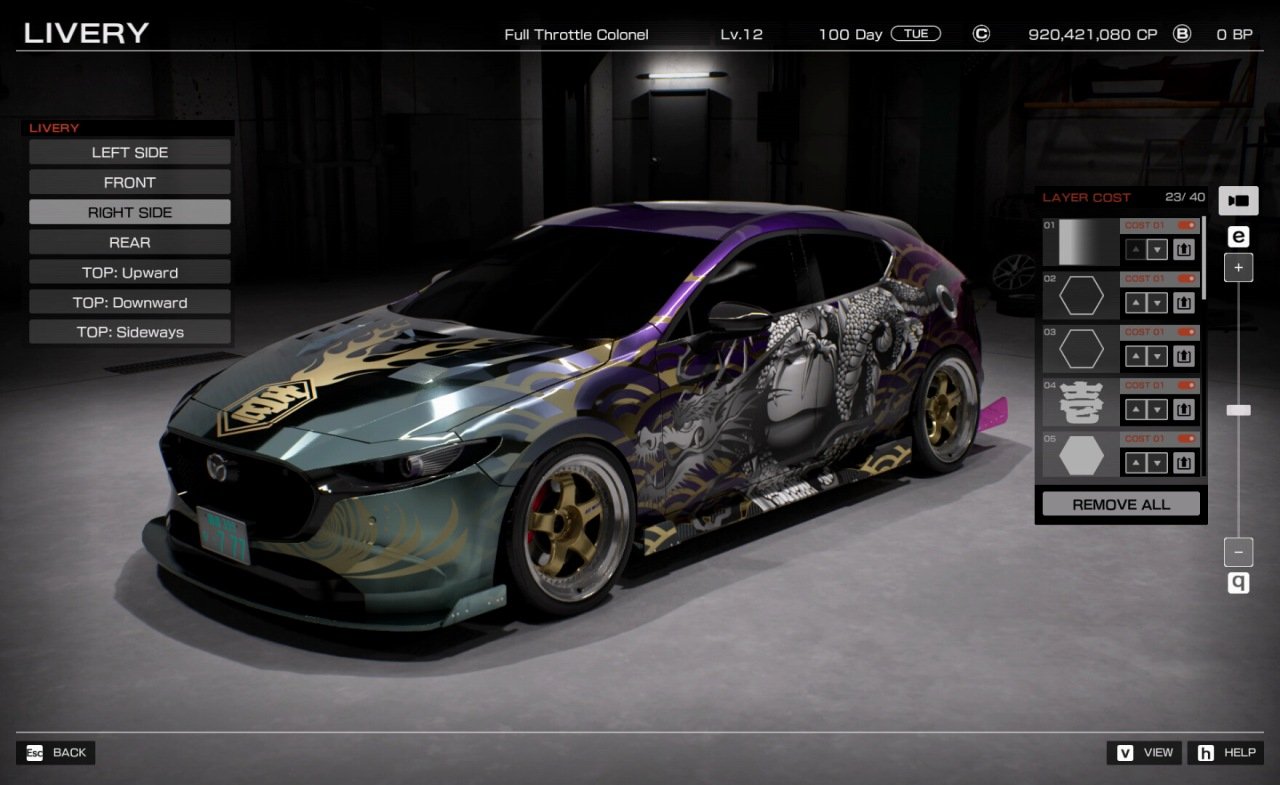
―What made you decide to release the new title on Steam?
Noguchi:
One of the main reasons was how much Steam has grown as a market in Japan. I’ve had my eye on Steam since around 2011, and over time, there’s been a significant increase in the number of Japanese users and domestic game releases. I was convinced that the Steam market has expanded in Japan, which is why I chose the platform for Tokyo Xtreme Racer’s release.
Also, there’s no denying that racing games have become a niche genre, so I thought it would be difficult to cover development costs and other expenses if we only released it in Japan. I knew we had to sell the game to a worldwide audience, so that was another reason why I found Steam to be a good match.
―Since you mentioned being up to date with Steam, have any titles caught your attention?
Noguchi:
If we’re talking about racing games, there have been several titles announced by overseas developers in the past two years that riff on the Tokyo Xtreme Racer series, and I feel like all of them are contributing towards keeping the racing game scene hot. These games that draw inspiration from Japanese titles – you’re probably thinking of the same one I am right now, are a sign that Japanese car culture is being accepted on a wide scale, at least that’s how I interpret it.
―I’m guessing you mean JDM: Japanese Drift Master? It’s a Polish developer’s take on Japanese street racing.
Noguchi:
I remember thinking “Guntama” was a hilarious move.* When I see everyone’s excited reactions to these games, I feel happy that Japanese car culture is being perceived as something fun.
*JDM: Japanese Drift Master is set in the fictional Japanese prefecture called Guntama, which is a play on the existing prefectures Gunma and Saitama.
Tokyo Xtreme Racer leverages both new technology and past research
―Why did you decide on an Early Access release for Tokyo Xtreme Racer? I believe it’s a new challenge for Genki.
Noguchi:
We were thinking of a full release at first, and then talk of doing Early Access cropped up while we were in the initial stages of development, so we were faced with the choice early on. However, since it had been so long since the last title in the series came out, we wanted to make sure we were on the right track and to carefully incorporate player feedback, which is why we ultimately decided to go for Early Access.
―Looking back, do you think it was a good choice?
Noguchi:
Yes, I’m glad we released the game in Early Access. Thanks to that, we’re receiving so much response from players.
―When did development of Tokyo Xtreme Racer start?
Noguchi:
We got started around the beginning of 2020 in a “behind the scenes” kind of way, as the project required all kinds of research.
―You developed the game in Unreal Engine, but was this choice aligned with Genki’s recent trends as a developer?
Noguchi:
Established developers liked to use in-house engines back in the day, didn’t they? However, when Unreal Engine and Unity appeared, we realized that we had no way of competing with them or reproducing the same level of quality. With that in mind, I think our decision to use Unreal Engine was a natural outcome, especially with the game being developed with a Steam release in mind.
―Did you already have experience working with Unreal Engine from Genki’s outsourced development work?
Noguchi:
We didn’t really have a lot of accumulated know-how, but we weren’t complete amateurs either – that’s how I’d describe our level at the time.
―I’m surprised to hear that considering how high-quality the models look.
Noguchi:
Thank you, our veteran team members worked really hard on that front (laughs). By the way, about 40% of the development team are veterans.
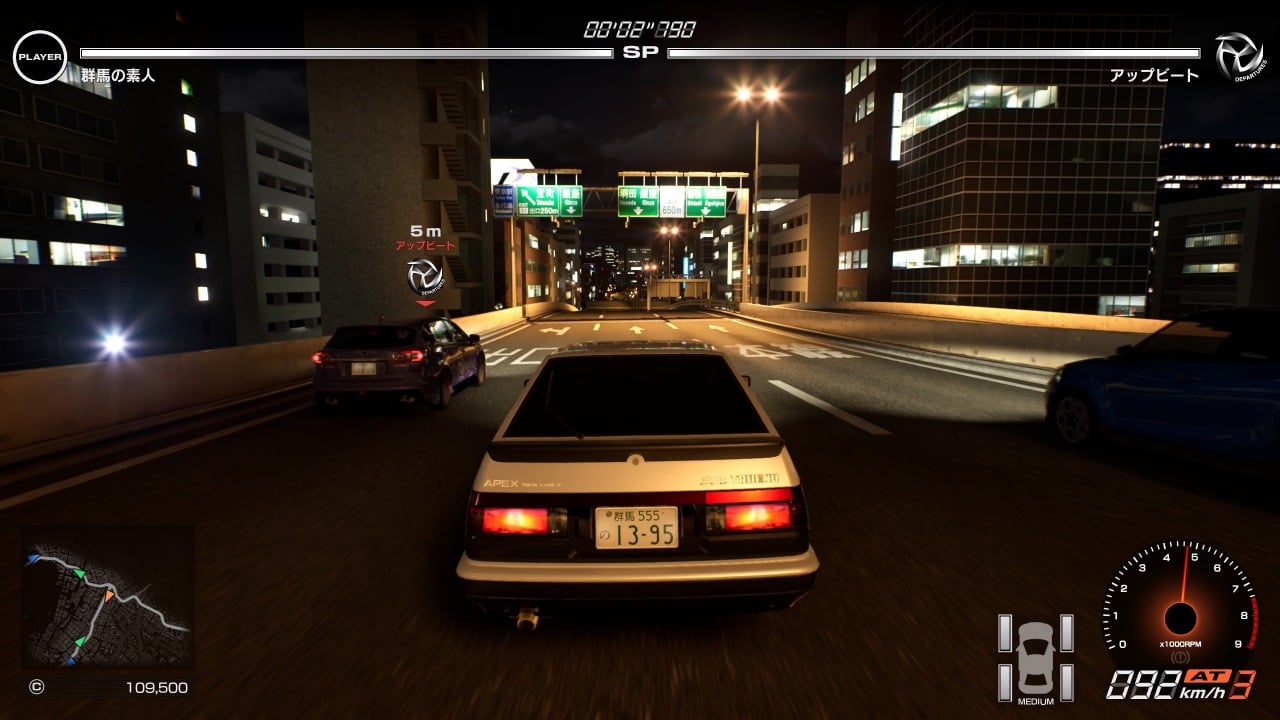
―Since it’s a revival of the series after so many years, I’m guessing you had to make practically all of Tokyo Xtreme Racer’s assets from scratch? That must have been an ordeal.
Noguchi:
That’s right. Although, since we had past data and experience to rely on, we rarely got stuck. For example, nowadays there are so many cars that you can’t gather detailed information about anymore, so our models from previous games and our past research really saved our lives at times.
―I see, so even though you couldn’t reuse assets, your past models and the research they were based on helped in development.
Noguchi:
Yeah, I mean when it comes to certain old car models, you can’t even get your hands on an auto brochure nowadays.
―(laughs)
Noguchi:
Car brochures not only include multiangle orthographic projections, but parameters as well, so they’re very useful for development. If you want to feature old car models in your game, getting your hands on the information you need can prove difficult, which complicates development. When I think of it like that, working for a long-established company has its perks.
Tokyo Xtreme Racer is all about the mysterious worldview
―What where some iconic characteristics of the Tokyo Xtreme Racers series that you were conscious of preserving in the reboot?
Noguchi:
One thing was the SP Battles. It’s not a system you see being implemented in other games of the genre, and I was personally very confident that it’s a fun mechanic, so I thought we had to bring it back this time too.
Also, this is going to sound a bit unusual, but another thing was preserving a “Tokyo Xtreme Racer-esque” lineup of cars. Other racing games don’t really feature cars like the Chaser or Crown, do they? But including such models has always been our series’ thing. It’s something we paid special attention to, and I think it’s something both veteran players and new fans alike can enjoy.
―So, a uniquely TXR-like lineup of cars is also something you’re conscious of.
Noguchi:
When I think about what makes the TXR series what it is, that’s the answer I inevitably arrive at. Even for the Toyota 86, we announced the Corolla Levin first, as opposed to the Sprinter Trueno, and it made me think, “This is what the TXR series is about” (laughs).
―How would you put into words what makes Tokyo Xtreme Racer unique?
Noguchi:
I would say it’s the mysterious atmosphere. I think the kind of worldview we’ve created in the latest Tokyo Xtreme racer is seldom seen elsewhere. Car culture was a lot more “major” in the 1990s and 2000s, and TXR has always strived to capture and embody the desires of car enthusiasts of the time. Personally, I think that has created a mysterious appeal that players are reacting positively to.
The Genki Racing Project initiative gave me the confidence boost I needed
―When you got started on Tokyo Xtreme Racer, did you ever worry about whether you should update the worldview to be more “with the times?”
Noguchi:
No, I didn’t hesitate at all. Normally I’m the kind of person who second guesses everything, but this was one thing I was completely sure about.
―What made you so confident about TXR’s “mysterious” worldview? Could you tell there was a demand for it?
Noguchi:
Nowadays, Japanese cars are booming in popularity overseas, which is what gave me confidence. The Japanese cars being customized and tuned in the West right now are the cars we were crazy about in the 1990s and 2000s. The significant presence of Japanese cars in the automotive industry is what prompted us to develop Tokyo Xtreme Racer.
―It’s fascinating how the real-life popularity of Japanese cars gave you the push to develop a new game.
Noguchi:
While we’re on the topic of games and real life, I think that the Genki Racing Project our company runs also contributed to my confidence a lot. Genki Racing Project is involved not only in game development, but in the real-life racing scene. From there, I got the opportunity to talk to many car enthusiasts, which gave me extra reassurance.
―So, in a way, Genki Racing Project’s activities allowed you to maintain relationships and contact with people from the racing scene and automotive industry, which in turn, gave you the conviction you needed to make TXR?
Noguchi:
I think so, yes. The TXR series had an 18-year hiatus, but the Genki Racing Project kept going on various fronts, like our company’s official X account. For example, on February 11, an eco-friendly car endurance race called “Exo Car Cup 2025” will be held at the Fuji Speedway. This race is basically the polar opposite of TXR, as you race for a set time, and the person with the best fuel efficiency is the winner. It’s a race even Sunday drivers can enjoy. I’ve been participating in such events here and there for a while now.
―I always found the Genki Racing Project interesting but kind of mysterious at the same time, as you don’t often see game developers participating in real-life racing. It must have been meaningful activity, with how it’s led you to a new hit.
Noguchi:
(laughs) I think so. The interactions I’ve had with people in the car scene gave me the courage to get the project for TXR on its feet.
―Thank you for sharing that, it was interesting to hear how about how your efforts bore fruit.
Noguchi:
Not at all, I don’t really get many opportunities to talk about it. I never imagined I’d be speaking about Genki Racing Project in an interview (laughs). I’d like to continue with these kinds of initiatives going forward too.
―We’re looking forward to your future endeavors!
Tokyo Xtreme Racer is in Early Access for PC (Steam).
[Writer, editor: Koutaro Sato]
[Interviewer, editor: Hideaki Fujiwara]
[Interviewer, editor: Ayuo Kawase]

